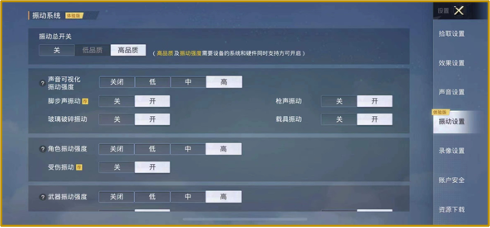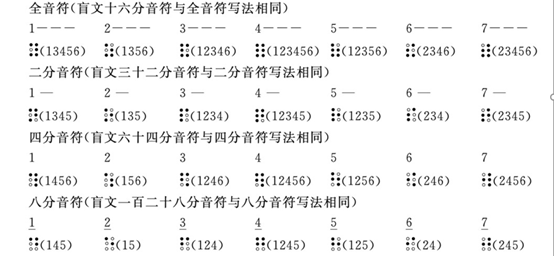Thanks for the invitation.
First of all, let me briefly introduce myself. I am Selen from Tencent Games. I have more than ten years of experience in game technology operations. Currently, I am in charge of the MTGPA project. MTGPA is a technical middle-end project of Tencent Games, responsible for the technical optimization of games in the terminal. User technical solutions such as software and hardware collaborative performance optimization, download experience optimization and haptic feedback technology led by the construction have become common solutions in the industry. In these places invisible to ordinary users, we continue to explore to bring gamers a smoother gaming experience.
Here, I would like to share the MTGPA team’s exploration in the field of haptic feedback and some small attempts in the field of accessibility. Welcome to discuss together.
First of all, haptic feedback is the development trend of game interaction experience
In fact, haptic feedback is not a new technology. The earliest haptic feedback technology existed at the beginning of the birth of mobile phones. Its main manifestation is the vibration of mobile phones. Presumably the “buzz” vibration when a call is received is not common to everyone. strangeness.
For a long time, vibration can only be used for simple information notification. The core reason is still limited by the ability of hardware. Although the traditional rotor motor has high vibration intensity, its response is insensitive, and the vibration frequency and intensity cannot be precisely controlled. The transmission of complex information.
The excellent performance of the linear motor, extremely short start-stop time, precise frequency, and intensity control ability make it possible to achieve complex vibration effects. In addition to hearing and vision, supplemented by rich tactile feedback effects, a more immersive virtual game world will be created, which has become an important trend in the development of game interaction experience.
Second, haptic feedback technology lacks a unified industry standard.
On the one hand, due to the large number of haptic feedback interaction scenarios, it is difficult to design a systematic solution. Although each terminal manufacturer has its own solution, the versatility is poor, and it is difficult for application developers to adapt;
On the other hand, due to the involvement of multiple upstream and downstream stakeholders in the industry, such as motor manufacturers, mobile phone manufacturers, application developers, etc., it is difficult to formulate a set of industry standards that are widely recognized by all roles.
Based on the current situation of the industry, Tencent Games MTGPA team and Peace Elite project team, through in-depth research on the industry, after two years of user research and technical solutions, designed a set of vibration description file definition and waveform editing, soft A complete solution including hardware interaction interface protocol and effect evaluation. The technical interface is compatible with android and iOS, and by defining a unified vibration effect description file and a unified authentication process, a unified effect across terminals is achieved, providing users with more than 200 in-game scenes such as characters, weapons, vehicles and sounds. The exclusive vibration effect, from function to scene, creates an all-round haptic feedback capability matrix.
Get through game content, system ecology, and basic hardware to empower developers to develop their creativity

Finally, there is still a lot of room for the application of haptic feedback technology.
Compared with the mature audio and video fields, haptic feedback technology still has a lot of room for further improvement in terms of hardware, tools and application scenarios. We are also exploring with different types of game project teams how to better combine haptic feedback technology with gameplay. You can also look forward to it, and you can communicate with us at any time if you have good ideas.
Today I want to focus on sharing some of our explorations in the field of obstacles.
It is understood that there are currently more than 85 million people with disabilities in China, of which about 17 million are visually impaired, about 27 million are hearing impaired, and about 25 million are motor impaired. In addition, according to the seventh national census data, there are about 264 million elderly people over the age of 60 in China. According to the differentiated needs of users, adapting and developing accessible products suitable for them is not only the policy orientation of the country, but also the overall development trend of the Internet industry.
As we all know, visually impaired users mainly perceive the world through hearing and touch. Because of the lack of vision, their sense of touch will be more sensitive than ordinary people. For example, visually impaired users can “read” text by touching Braille. But in the field of information technology, users can only rely on screen-reading software to obtain information.
Through face-to-face communication with disabled groups and the actual experience of users, we recognize that haptic feedback technology has strong potential in the fields of technological disability assistance and information accessibility. We actively cooperate with professional institutions such as Shenzhen Information Accessibility Association and Southeast University to jointly promote the application of haptic feedback technology in the field of accessibility, open source the technological achievements to empower the industry, and strive to use technology to promote the cause of disabled persons in the new era. develop.
With the unified and standard technical solutions implemented in the game in the early stage, we only need to pay attention to the specific application scenarios of accessibility. In nine important sub-scenarios under Internet services, including shopping, travel, social interaction, learning, obtaining external information, personal employment, life, work, and financial services, users have encountered many inconveniences that cannot be solved by screen reading.
Take two of these cases to illustrate:
In daily travel scenarios, the direction (pointer) indicated by the current map software is drawn, and the screen reading software cannot read it. Therefore, for many disabled friends, it is impossible to identify the direction through the map software. There is a foundation Sexual use disorder.
By applying haptic feedback technology to travel navigation, people with disabilities can obtain the direction when using map products through different ways of vibration prompts. For example, the closer the distance to the pointer direction, the lighter the vibration. When the direction is correct, it does not vibrate. The farther away, the stronger the vibration, and at the same time, there are different vibration modes at the beginning and end, etc., so as to realize the compensation for the tactile sensation of the software user and play an effective reminder role.
In daily information reception and expression scenarios, Braille is an important information input and output medium for visually impaired people, and it is also the best way to help visually impaired people acquire complex information and understand complex content, such as mathematics, physical and chemical symbols, etc. . Unfortunately, many complex information is currently presented on the Internet without accessibility optimization and Braille translation, making it impossible for visually impaired people to obtain this information through smartphones.
Applying haptic feedback technology to Braille input method can help visually impaired users identify different key types, quickly lock target elements or key operations by defining different vibration sets, effectively prevent operation errors, and facilitate visually impaired people to obtain information efficiently. Effectively improve the operation efficiency of visually impaired users.
According to the point sequence (1-6) of the Chinese Braille standard, different vibration rules of 1-6 numbers are defined according to the horizontal and vertical coordinates, so that the Braille information can be presented by vibration. Developers can even define musical scores, geometry in mathematics, etc. as different sets of vibrations to help people with disabilities acquire abstract knowledge by defining rich haptic feedback information.

(New vibration rules to pass sheet music)
Such vibration effects can also be applied to many mainstream commonly used APPs to improve the experience of people with disabilities on various APP software.
We firmly believe that a technology with accessibility attributes is not only for the disabled, but for everyone.
MTGPA is also practicing this concept. Among them, the application of haptic feedback technology in specific scenarios can not only solve the dilemma of people with disabilities in using products, but also improve the experience of ordinary people. For example, the vibration solution in the direction recognition scene in the map scene we are exploring can not only effectively solve the problem that visually impaired groups cannot recognize the direction when using map software when going out, but also has a strong sense of direction for ordinary people with poor sense of direction. Auxiliary, can also greatly enhance the user’s experience of using map products. It has truly broken through the circle, from “a certain type of person” to “all people”.
We are committed to promoting the solution of tactile feedback in Braille input method, exploring and solving the problems encountered by visually impaired groups when dealing with complex content in the process of life, work and study, such as music score learning, mathematics, physical and chemical symbol learning, etc. Effectively help solve the long-standing and difficult problems of the visually impaired group in the process of education, and bring more possibilities to the work and life of the visually impaired group. Let more people use technology to bridge the digital divide and make up for differences in physical functions and environments, so that everyone can access, interact, and use information in an equal, convenient and safe manner.
In this field, we have just taken the first step, and we will continue to devote our enthusiasm to research, provide more immersive and delicate services, and allow haptic feedback technology to cover more users.
Source: Zhihu www.zhihu.com
Author: selen
[Zhihu Daily] The choice of tens of millions of users, to be a big cow of new things in the circle of friends.
click to download
There are 5 more answers to this question, see all.
Further reading:
What are the world’s leading technology applications for domestic game research and development?
This article is reproduced from: http://www.zhihu.com/question/534542532/answer/2502458298?utm_campaign=rss&utm_medium=rss&utm_source=rss&utm_content=title
This site is for inclusion only, and the copyright belongs to the original author.